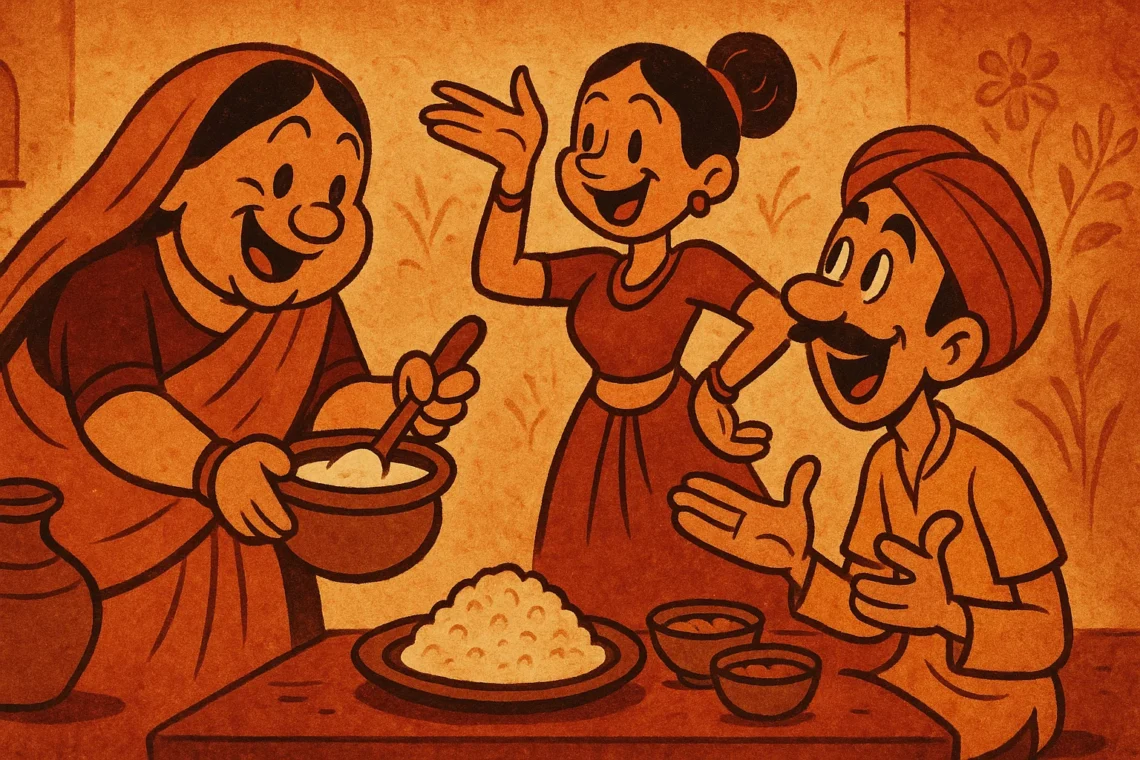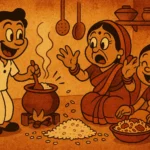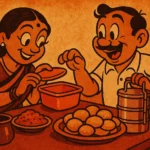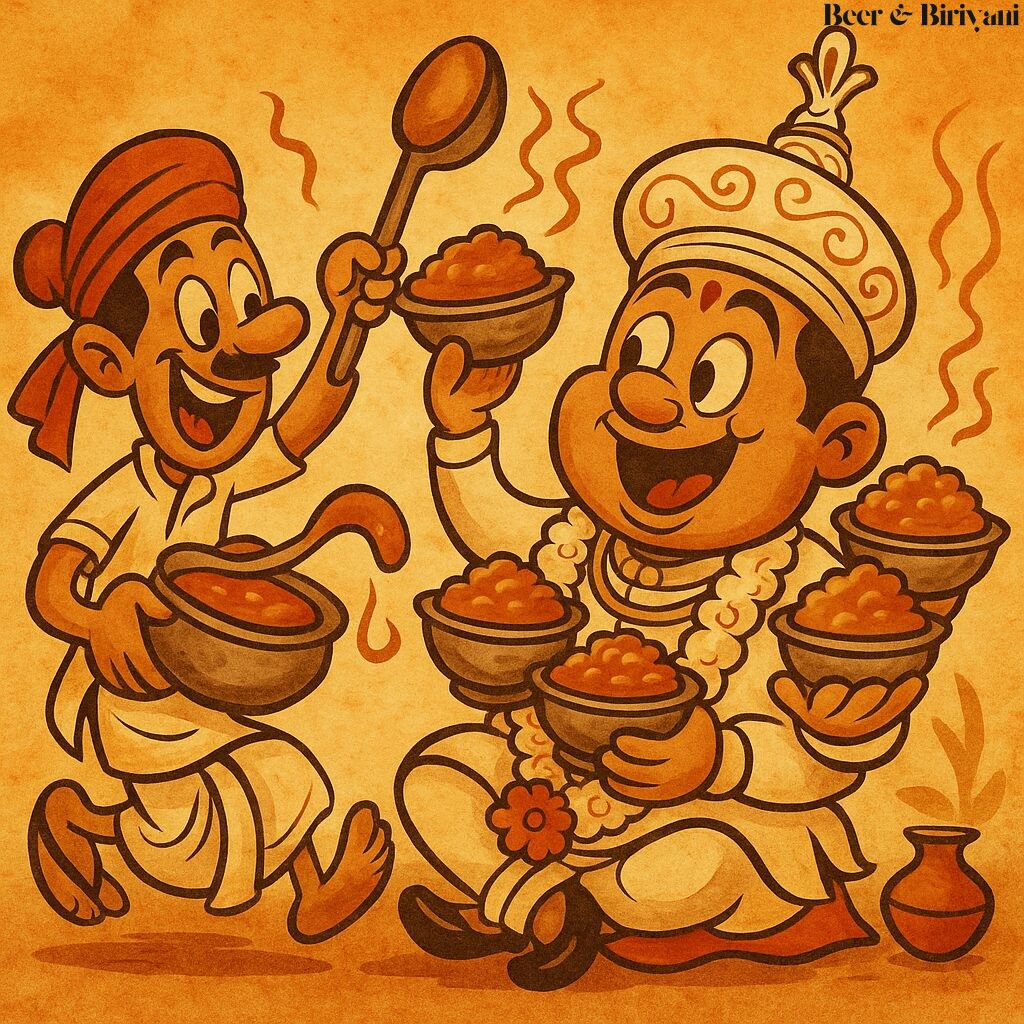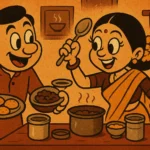In most Western homes, yogurt lives a pretty uncomplicated life. It’s a breakfast item, maybe a post-workout snack, comes in vanilla or strawberry, and sometimes hangs out with granola. In our house though, dahi had range. It wasn’t just food—it was medicine, conflict resolution, weather forecast, and cultural doctrine, all packed into a cool clay pot.
Growing up in Mumbai, I never saw dahi as a treat. It was never scooped out of a plastic cup with a foil lid. It came out of an earthen handi, quietly sitting in the corner of the kitchen like a wise elder. You didn’t buy dahi, you set it. Every night. Like clockwork. Milk was boiled, cooled to just the right temperature (tested with the pinkie method—no thermometers in this ritual), and a spoonful of the previous day’s dahi was stirred in with a sense of ceremony. Then it sat overnight, wrapped in a thin towel, like a sleeping baby you weren’t supposed to disturb.
The Great Desi Cure-All
Dahi wasn’t there to be trendy. It was functional. You had acidity? Eat dahi. Too much garam masala? Have dahi. Burned your tongue on a hot samosa? Dahi. Got exam results and emotions were running high? Dahi with sugar. Bad dream? Dahi. The world could be falling apart, and your grandmother would say, “Thoda dahi le lo.”
Even when it wasn’t strictly medicinal, dahi was like edible insurance. Going out in peak May heat? One bowl of dahi with a pinch of sugar. “It cools the body,” they said, and you believed it. Not because you understood the science, but because generations before you had survived summer that way. You didn’t question ancestral yogurt logic.
The Night-Before Tradition
There was a specific kind of nervous energy in the kitchen the night before a big exam or journey. Out came the small steel katori, into which dahi and sugar were mixed with methodical care. This wasn’t dessert—it was ritual. It was supposed to bring luck, focus, and keep your body cool under pressure. And God forbid the dahi didn’t set that day. Panic. Absolute household emergency. Plans were made, backup neighbors contacted. Because a house without dahi is a house that’s lost its moral compass.
Not All Dahi Is Equal
The texture mattered. Real dahi had a slight wobble when you tapped the container. Too runny? It hadn’t set properly. Too solid? That’s suspicious. Store-bought dahi was a last resort, used only in times of desperation or travel. It lacked character. It didn’t have that slight tang, the depth, the comfort. It wasn’t born under your roof. It hadn’t absorbed the collective drama of your household.
And don’t even get me started on curd rice. That was the true healing dish. Equal parts therapy and meal. Soft rice, cold dahi, a touch of salt, maybe a bit of tempering with mustard seeds if someone was feeling fancy. That bowl didn’t judge you. It understood. Whether you had food poisoning, heartbreak, or just a long day—you could always count on curd rice to carry you home.
From Handi to Fridge Shelf
When I moved to Austin, I tried to continue the tradition. But the milk was different. The air was different. My first attempt at setting dahi was a disaster. It smelled like betrayal. I resorted to buying tubs of Greek yogurt, but it didn’t hit the same. No pinkie test. No cloth wrap. Just plastic and disappointment. And yet, on hard days, I still reach for it. Out of habit more than hope.
Eventually, I figured it out—using whole milk, a starter culture brought from my last visit to Mumbai, and a ceramic bowl that sits inside my oven with the light on. It’s not the same, but it’s close. And now, when my son says his stomach hurts or he feels too hot, I offer him a bowl of dahi, just like my mother did. He wrinkles his nose, asks if he can put sugar in it, and then eats it anyway. That’s the start.
Not Just a Side Dish
Dahi isn’t just a snack or a condiment. It’s heritage you can eat. It connects you to the hands that stirred the milk and whispered superstitions over it. It tells you that no matter what the problem is—body, mind, or spirit—someone once believed a spoonful of fermented milk could make it better.
And maybe, sometimes, that belief alone is the cure.
Born in Mumbai, now stir-frying feelings in Texas. Writes about food, memory, and the messy magic in between — mostly to stay hungry, sometimes just to stay sane.

